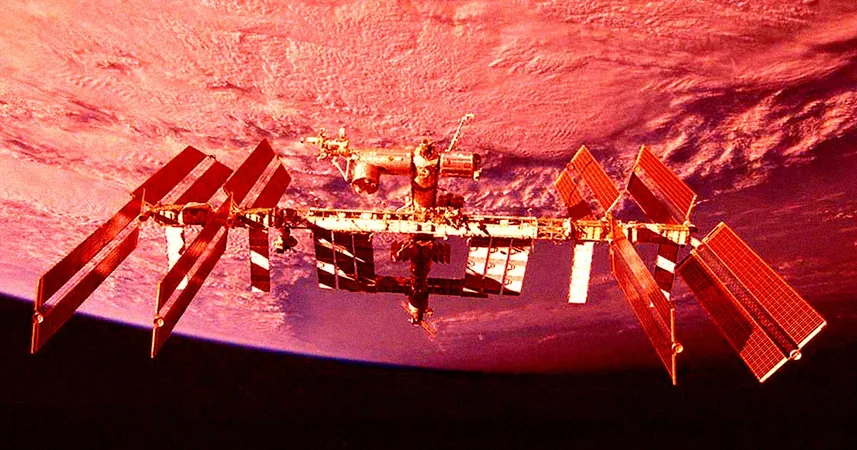
Cracks in the International Space Station Raise Alarms: NASA Sounds the Alarm!
2024-09-27
A concerning report from NASA's Inspector General has shed light on alarming air leaks in the International Space Station (ISS), specifically within a tunnel that connects its Russian segment to a docking port.
Crack Crisis Intensifies
NASA's report indicates that ongoing air leaks in the Service Module Transfer Tunnel are now considered a "top safety risk." The agency, in collaboration with Russia's space agency Roscosmos, is actively investigating these issues and attempting to uncover the root cause while monitoring for any new leaks.
In a startling development, an assessment made in April revealed that the air leak rate had surged dramatically to a staggering 3.7 pounds of atmosphere per day—up from just under a pound in February. This sharp escalation has raised eyebrows among space officials and scientists alike, as it marks the highest leak levels recorded to date.
Despite extensive analysis, the exact cause of the leaks remains elusive. Both NASA and Roscosmos have concentrated their investigation on the internal and external welds in hopes of pinpointing the source. However, addressing these issues could prove difficult due to ongoing supply chain challenges affecting NASA's contractors, which could complicate operations aboard the ISS.
Impending Challenges
In June, the gravity of the cracking situation prompted NASA to elevate it to the highest concern level in its risk assessment matrix. With leaks potentially jeopardizing the station's functionality, there are fears that the agencies may have no choice but to permanently close the hatch to the affected tunnel. This would effectively cut astronauts off from one of the four key docking ports on the ISS, compromising their operational capabilities.
While Roscosmos remains optimistic about monitoring the situation, there is uncertainty surrounding the precise point at which the leak rate will become unsustainable. Tensions are mounting as both agencies struggle to reach a consensus on acceptable leak levels, and time is running out.
A Race Against Time
Some experts and officials are suggesting that modifications to the ISS could be explored to extend its operational life beyond 2030. However, such moves would demand substantial funding and would come with increased risks, considering the aging structure of the station.
With the clock ticking down to critical deadlines, the situation represents not just a logistical challenge, but a serious concern for the safety and functionality of the ISS. The pressure is on both NASA and Roscosmos to find viable solutions to these cracks before they become an unmanageable crisis in the vacuum of space.
Stay tuned as we cover this developing story and its potential implications for the future of space exploration!



 Brasil (PT)
Brasil (PT)
 Canada (EN)
Canada (EN)
 Chile (ES)
Chile (ES)
 España (ES)
España (ES)
 France (FR)
France (FR)
 Hong Kong (EN)
Hong Kong (EN)
 Italia (IT)
Italia (IT)
 日本 (JA)
日本 (JA)
 Magyarország (HU)
Magyarország (HU)
 Norge (NO)
Norge (NO)
 Polska (PL)
Polska (PL)
 Schweiz (DE)
Schweiz (DE)
 Singapore (EN)
Singapore (EN)
 Sverige (SV)
Sverige (SV)
 Suomi (FI)
Suomi (FI)
 Türkiye (TR)
Türkiye (TR)